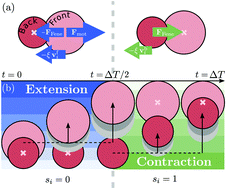Dr. Arnold J.T. Mathijssen, 8 July 2019

Collective functionality in active fluids: Hydrodynamic communication, bacterial active carpets, and ciliary mucus clearance
Arnold JTM Mathijssen
Stanford University, Dept. of Bioengineering, 443 Via Ortega, Stanford, California, USA amath@stanford.edu
The vast majority of life forms make grand achievements through co-operative efforts, by assembling in dense schools, herds, charms, flocks, teams & parliaments, despite the depletion of resources in these crowded and dynamic environments. Such trade-offs occur not only at the organismic scale, but also between individual cells, and even among the molecular motors that constitute these.
Here, we will explore some of the biophysical mechanisms that enable this multi-scale organisation. I will first focus on reliable communication in ultra-fast biology, exemplified by the discovery of “hydrodynamic trigger waves” in cellular communities that propagate hundreds of times faster than their swimming speed [1]. Second, we will discuss nutrient transport by bacterial “active carpets”, which can generate colony-wide flows when they arrange themselves in specific topological patterns [2]. Finally, I will touch on our latest work on ciliary arrays in the mouse airway, and how disorder may actually be beneficial in pathogen clearance [3]. Together, these also help us think about the design space of active fluids and the relationships between sensors and actuators in biological systems.
- Mathijssen AJTM, Culver J, Bhamla MS, Prakash M, “Collective intercellular communication through ultra-fast hydrodynamic trigger waves,” bioRxiv DOI 10.1101/428573 (2019)
- Mathijssen AJTM, Guzman-Lastra F, Kaiser A, Löwen H, “Nutrient transport by microbial active carpets,” Phys. Rev. Lett. 121, 248101 (2018)
- 3. Ramirez-San Juan G, Mu He, Mathijssen AJTM, Marshall W, Prakash M, “Multi-scale heterogeneity enhances mucus clearance in mouse airways”, in preparation (2019)


